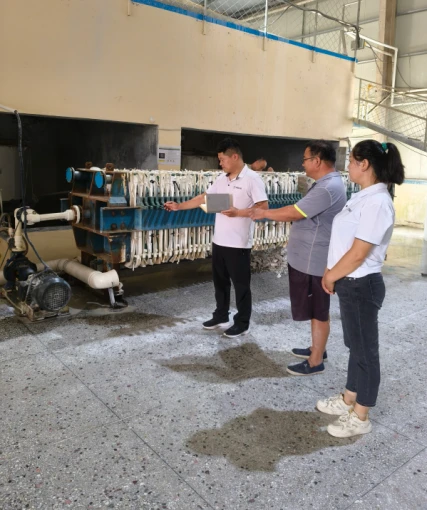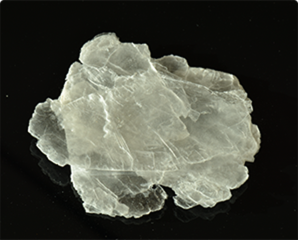High-Quality Automotive Paint Pigment Powder Pearl & Metallic Effects for Cars
- Introduction to automotive paint pigment powder
and its significance - Technical advancements and innovation trends in pigment powder
- Comparative analysis of leading manufacturers
- Customization strategies for unique automotive finishes
- Application scenarios and real-world examples
- Performance evaluation: data-driven benefits and quality assurance
- Conclusion: automotive paint pigment powder shaping the industry

(automotive paint pigment powder)
Unveiling the Evolution of Automotive Paint Pigment Powder
The realm of automotive paint pigment powder has rapidly evolved to satisfy the ever-growing demand for vibrant finishes, durability, and environmental responsibility in the car refinishing sector. Consumers and manufacturers alike seek formulations that can transform basic paint into eye-catching, resilient coatings. Recent market analysis reports that the global market size for all types of automotive pigment powders surpassed USD 3.5 billion in 2023, reflecting an annual growth rate of 6.2%. Innovations focus on enhancing gloss, color retention, and mechanical toughness while meeting VOC regulations and sustainability benchmarks. Modern pigment powders, like metallic and pearl powder for automotive paint, serve as the backbone for luxury finishes, improved resale value, and distinct brand identities.
Advancements and Technology Trends in Pigment Powders
The chemistry and manufacturing technology behind automotive paint pigment powders have advanced significantly. Today’s products offer improved particle dispersion, enhanced color homogeneity, filtered micron sizes for reduced clumping, and better adherence on substrates. For example, advanced automotive pearl pigment powder provides multidimensional effects, using precision-milled mica substrates coated with titanium dioxide or iron oxides, delivering richer pearlescence and unique chromatic shifts. High-performance organic pigment powders have also gained traction, offering up to 30% higher UV and chemical resistance compared to traditional inorganic options. Technical metrics highlight measurable upgrades—modern pigment powders can withstand thermal cycling up to 180°C and maintain less than 5ΔE color deviation after 1,000 hours of accelerated weathering. The adoption of encapsulated nano-pigments further boosts clear coat compatibility, reflecting up to 95% color uniformity across body panels.
Comparison of Leading Pigment Powder Manufacturers
In choosing the optimal pigment powder supplier, it's essential to weigh performance, product range, cost-efficiency, and support services. Below is a comparative table featuring prominent global manufacturers based on key industry metrics:
| Manufacturer | Product Range | Color Stability (ΔE after 1000hr) | Pearl/Mica Content (%) | Unit Price (USD/kg) | Environmental Certificates |
|---|---|---|---|---|---|
| BASF Coatings | Metallic, Pearl, Solid, Custom | 3.1 | 82 | 38–62 | ISO 14001, REACH |
| PPG Industries | Pearl, Organic, Nano-pigment | 2.9 | 87 | 44–73 | ISO 9001, LEED |
| Sudarshan Chemical | Mica, Metallic, Hybrid | 3.6 | 79 | 27–55 | RoHS, EN71 |
| Toyo Ink | Custom Pearl, Specialty Effects | 3.2 | 85 | 49–77 | ISO 14001, REACH |
| Heubach Group | Organic, Inorganic, FX Blend | 3.5 | 74 | 31–59 | ISO 9001, GOTS |
As evidenced, product range and certification compliance vary substantially. Manufacturers offering encapsulated nano-pigments or hybrid effects are leading the shift towards more sustainable, high-impact options.
Custom Solutions: Tailoring Pigment Powders for Distinct Automotive Finishes
The customization potential of pigment powders is at the heart of today’s vehicle coating market. OEMs and car customizers leverage these possibilities to create one-off color effects, intense metallic sheens, or soft pearl transitions. For bespoke projects, suppliers offer color-matching services, laboratory-developed blends, and delivery on pigment loads ranging from 7–20% for basecoats or as low as 1–3% for topcoats, depending on flop intensity and desired opacity. Some luxury automakers integrate up to three unique pigment layers—base, mid, and effect—to create their signature look. Pearl powder, for example, is often milled to particle sizes below 20 microns, enabling smooth, mirror-like finishes for concept vehicles and limited editions. Custom projects may also specify unique light-reactive pigment technologies, such as thermochromic or photochromic options, which further expand creative choices for discerning clientele.
Application Use-cases: Real-world Automotive Success Stories
Pigment powders are integral in both factory lines and aftermarket customization. For instance, an electric vehicle manufacturer adopted a low-VOC pearl pigment powder system for its luxury SUV series, achieving a reported 32% increase in consumer preference for new color launches, driving sales in core markets. In another scenario, a European rally team coated race vehicles with hybrid mica/pearl pigments, improving brand recognition and media engagement during the racing season. Auto parts suppliers utilize specialized metallic powders to offer long-lasting finishes on wheel rims, reporting warranty claims below 0.92% over a three-year period. With advancements in application methods—electrostatic spraying, automated robot arms, and plasma coating—application efficiency has climbed to 98% transfer rate, ensuring minimal waste and consistent appearance across all surfaces of the car.
Data-Driven Performance: Quality and Assurance Metrics
Performance validation is critical in the pigment powder selection process. Quality can be quantified through multiple industry-standard tests, such as color fastness, salt spray resistance, and gloss retention. For example, premium automotive pearl pigment powder grades consistently demonstrate a 95%+ retention of gloss after 800 hours in a Xenon arc test. Additionally, salt spray exposure tests reveal that vehicles finished with encapsulated pigment materials exhibit up to 43% less corrosion at weld seams after 500 cycles compared to conventional coatings. End-use feedback further supports these metrics: body shops report a reduction in respray incidents, from 7.1% to 3.5%, following the switch to newer-generation pigment powders. Automated color matching software now achieves Delta E deviations below 2.5 points, dramatically reducing rejection rates and paint waste at scale.
Conclusion: Automotive Paint Pigment Powder Transforming the Industry
The ongoing advancement and integration of automotive paint pigment powder technologies redefine durability, aesthetics, and cost-effectiveness in automotive coatings. From technical innovation and broad manufacturer selections, to tailored solutions and quantifiable application results, pigment powders are the driving force behind transformative automotive finishes. With color consistency, environmental compliance, and creative latitude now more accessible than ever, automakers, refinishers, and consumers collectively benefit from the relentless progression in pigment powder science. As the global automotive market seeks to differentiate through color and protection, the significance of pigment powders will continue to grow—offering unmatched value from production line to showroom floor.

(automotive paint pigment powder)
FAQS on automotive paint pigment powder
Q: What is automotive paint pigment powder?
A: Automotive paint pigment powder is a finely ground coloring agent used to tint and color car paints. It provides consistent color and finish. It's crucial for achieving professional automotive paint results.Q: How does pearl powder for automotive paint enhance the finish?
A: Pearl powder adds a shimmering, iridescent effect to automotive paint. This gives vehicles a unique and eye-catching look. It's commonly used for high-end or custom car finishes.Q: Can automotive pearl pigment powder be mixed with any paint?
A: Yes, you can usually mix automotive pearl pigment powder with most types of automotive paints. Always check compatibility with your specific paint system. Proper mixing ensures an even, sparkling finish.Q: Is automotive paint pigment powder safe to use at home?
A: Automotive paint pigment powder is safe to use with basic protective gear like gloves and masks. Always work in a well-ventilated area. Follow all safety instructions provided by the manufacturer.Q: How much pigment powder should I add to automotive paint?
A: The recommended amount is typically 1-5% pigment powder by weight of the paint. Adding more can affect the paint's consistency. Always start with a small amount and adjust to your desired intensity.-
Transforming Surfaces with Mica-Enhanced Paints in Coatings and DecorationNewsJul.02,2025
-
The Ultimate Guide to Mica-Based Luminous Colors with Pearlescent PigmentNewsJul.02,2025
-
The Critical Role of Mica in Industrial Applications in Welding and Oil FieldsNewsJul.02,2025
-
Revolutionizing Automotive Aesthetics with Modified Plastics Pearlescent PigmentsNewsJul.02,2025
-
The Secret with Mica Powder for Cosmetics Behind Radiant, Natural MakeupNewsJul.02,2025
-
Enhancing Performance in Polymer Applications with Mica Powder for RubberNewsJul.02,2025
Products categories









